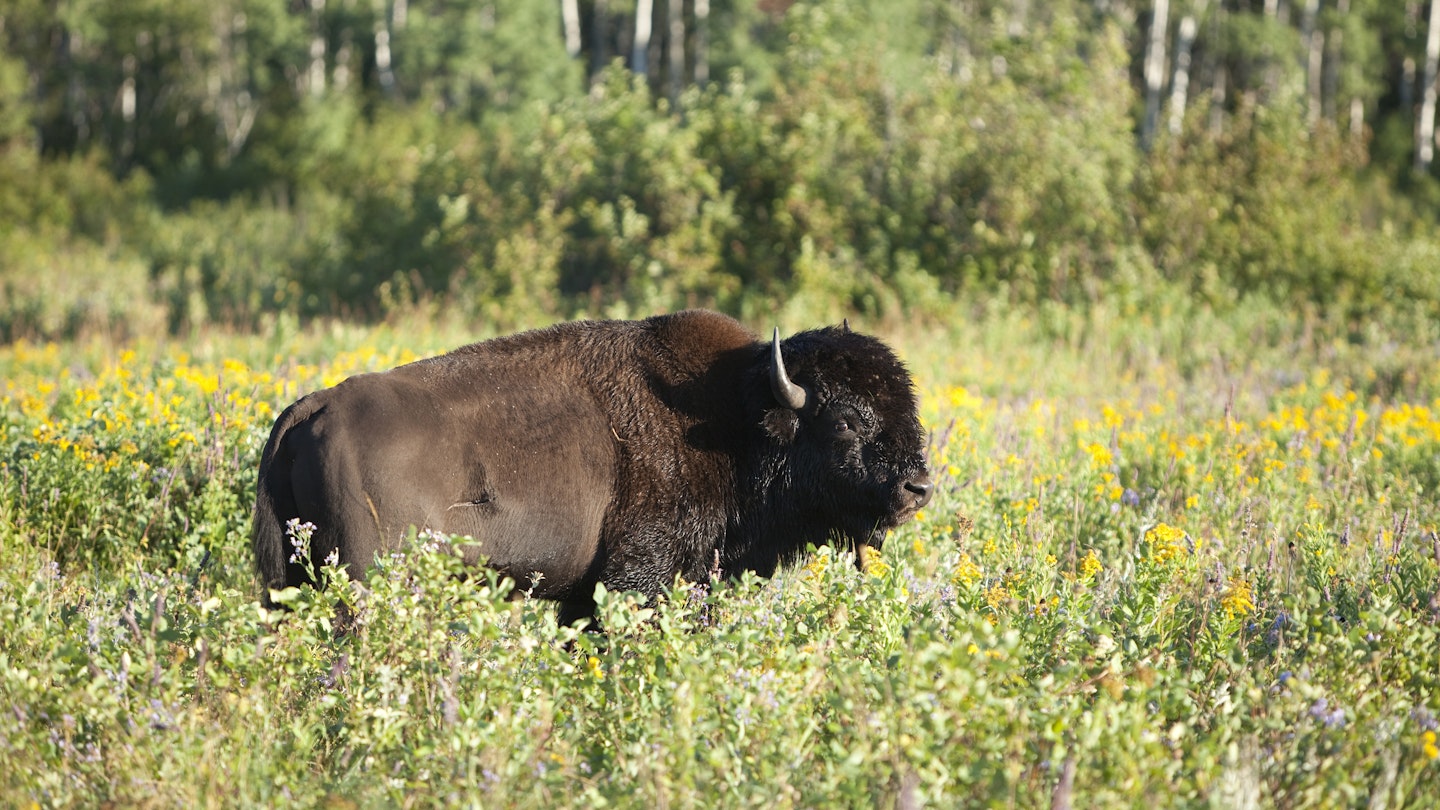Share
Apr 30, 2018 • 5 min read
In a land where wildflowers blossom underfoot, moose wander nonchalantly across your path, grain elevators stand guard like soldiers of the past, and shimmering lakes beg to be paddled across, Manitoba’s wide-open west is a destination for those in the know. Situated within the heart of the country, Manitoba rests quietly with its secret right out in the open – a Neverland of nature and a living, compelling history. It’s this summer’s place to be.

Riding Mountain National Park
A forested oasis rising up from a province known mostly for its flatness, these gentle valleys, rolling hills and winding trails lead through lush boreal woods and stands of aspen. Bears lumber, moose munch, owls swoop and beavers fill the sparkling lakes. To fully explore this seemingly unreal setting, grab your hiking boots and hit the trails such as Gorge Creek Trail or Bald Hill Trail for breathtaking views. You can also rent a kayak or a paddleboard at Clear Lake Marina (www.theclearlakemarina.ca); rental bikes are available in the park, too. If picturesque lakeside Wasagaming is too comfortable, pitch a tent in your choice of over 600 campsites and some unique camping structures such as oTENTiks, Micro-Cubes, and yurts. Make the most of your visit by exploring 3000 sq km of untamed wilderness.
Inglis Grain Elevators
Standing like sentinels in a huge field of golden wheat that eventually melts into the sunshine, the railway arrived in tiny Inglis in 1922. Local producers immediately got to work building this row of wooden, slope-shouldered grain elevators. By the 1930s, over 5700 were constructed rail-side across the prairies, the new bread-basket of the world. A flagship of prairie architecture, Inglis now boasts the longest row of original elevators left. Climb inside these restored, creaky structures for captivating exhibits at Inglis Grain Elevators National Historic Site (www.ingliselevators.com). Inhale the rich history as you gaze out the window.

Neepawa
Consistently named Manitoba’s most beautiful town, Neepawa (www.neepawa.ca) is also known as the lily capital of the world. With fewer than 5000 lucky residents, Neepawa is named ‘Land of Plenty’ in the Cree language. Visitors will find hiking trails, the Farmery Estate Brewery, a bird sanctuary, and a picturesque golf course. Most notably, the tree-lined downtown boasts striking historic architecture. Attend a film at the 1906 Roxy Theatre, explore the former home of celebrated author Margaret Lawrence, or admire the design of the 1890s Romanesque Knox Church. If you can’t tear yourself away, consider staying at one of the local heritage B&Bs.
Fort Dauphin
Step inside the wooden palisade and immerse yourself in the fascinating world of an 18th century fur trade post. As you wander through a pioneer log house, once home to a family of 16, or engage with the blacksmith’s shop and trading post, you will gain insight into early pioneer life. The Fort Dauphin Museum (fortdauphinmuseum.wordpress.com) is small but features over 80,000 artefacts, including the more unusual remains like dugout canoes abandoned by German prisoners of war.
Pierogi and Sausages
Between the 1890s and 1914, over 150,000 Ukrainian homesteaders arrived in Canada, primarily settling in Western Manitoba. Their influence is evident in architecture, dance, festivals, and notably, cuisine. At roadside diners, you’re likely to find holobtsi (cabbage rolls), pyrophy (perogies), and kovbasa (garlic sausage) on the menu. These Ukrainian dishes, often fried or boiled, are packed with flavor that will leave you craving more. For the full array, visit the family-run Ukrainian Cuisine (ukrainiancuisine.biz) in Brandon. For stunning examples of Ukrainian architecture, you’ll want to explore Sandy Lake (www.sandylakemanitoba.com), where you will find the iconic silver onion domed churches.

Spirit Sands & Devil’s Punch Bowl
Many visitors may be surprised to encounter sand dunes during their hike through this diverse park, which includes grasslands and forests. The fortunate few may spot a western plains hognose snake or a northern prairie skink among the dunes, considered sacred by local First Nations. The picturesque trails at Spirit Sands lead down to the eerie blue-green pond of Devil’s Punch Bowl, creating an unforgettable landscape. Hikers should be prepared for midday sun and, cautiously, for poison ivy.
The Stott Site
Imagine the footfall of hundreds of bison, stampeding down the valley into a floodplain where hunters lay in wait with spears and arrows. For 1200 years, local First Nations utilized this area for sustainable hunting, using every part of the bison – from meat to marrow. The reconstructed brush enclosure at Stott Site allows visitors to visualize this historical endeavor. Located in Grand Valley Provincial Park (www.travelmanitoba.com), it is not far from Brandon. If you are hoping to see bison in person, check out the enclosure at Lake Audy in Riding Mountain National Park.

Souris Swinging Bridge
When Squire Sowden first built his precarious swinging bridge over the Souris River in 1904, he aimed to increase accessibility and property value for his land on the far bank. Little did he know that he would be putting this farming community on the map, drawing over 5000 visitors each year. Canada’s longest single-span suspension bridge measures 584 feet and, while rebuilt and stabilized in 2013, it’s still not for the faint of heart. The new handrails offer some reassurance, but the wobbling remains inevitable.





